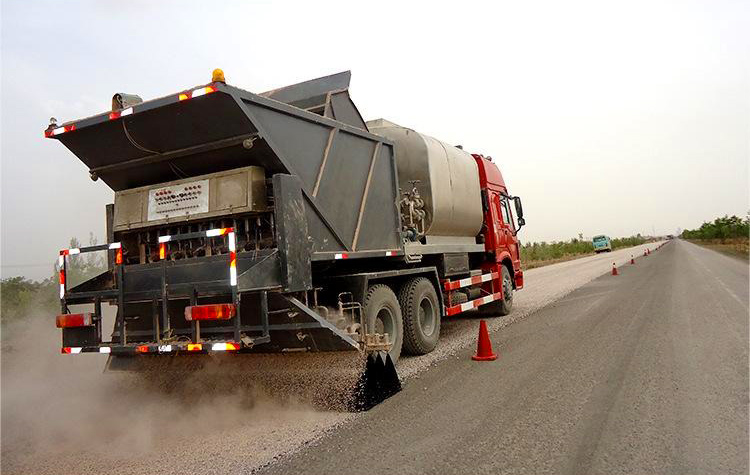The purpose of gravel sealing is to seal tiny cracks in the road surface and prevent rainwater from penetrating into the underlying layer or base layer. This process can effectively prevent fatigue damage of the asphalt surface layer, improve the anti-slip and wear resistance of the pavement, delay the aging of the existing road surface and reduce aggregate loosening. The construction method of the gravel seal layer adopts the layer laying method, which is of the embedded type in structure. Its construction is convenient and low-cost, and it is suitable for preventive maintenance and intermediate repair of asphalt pavements with low and medium traffic volumes.

Gravel seals can be divided into the following five types according to the functional characteristics they need to achieve:
1. Used as a surface wearing layer (top sealing layer) for preventive maintenance or intermediate repair. Generally, when various cracks and loose diseases appear on the road surface, and surface cracks need to be sealed to prevent water from infiltrating, or when the anti-skid performance of the road surface decreases and a wear surface layer needs to be provided, gravel sealing can be considered.
2. Used as a stress-absorbing interlayer in pavement structures. The gravel seal is used as the stress-absorbing intermediate layer of new asphalt pavements, overhauls, and cement concrete pavements as asphalt pavements. It can absorb and diffuse local concentrated stress, inhibit the occurrence of reflective cracks, and reduce the occurrence of pavement diseases.
3. As the lower sealing layer of highways at all levels. The gravel seal layer is used as the lower seal layer of asphalt pavement on all levels of highways. It can better seal the surface gaps, prevent water from infiltrating into the underlying layer or base layer, and improve the road's resistance to water damage.
4. As a waterproof layer for bridge deck pavement. The gravel seal has good penetration into the cement concrete bridge deck and can form a dense protective film with high waterproof performance, high crack resistance and high stress absorption and diffusion capabilities.
5. As a surface layer for low-grade highways. This process can also be used as the surface layer of low-grade roads (especially rural roads), and is economical and durable.